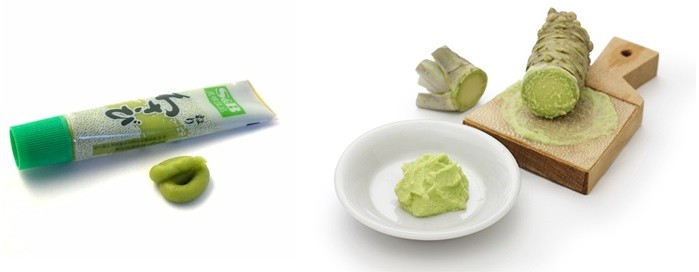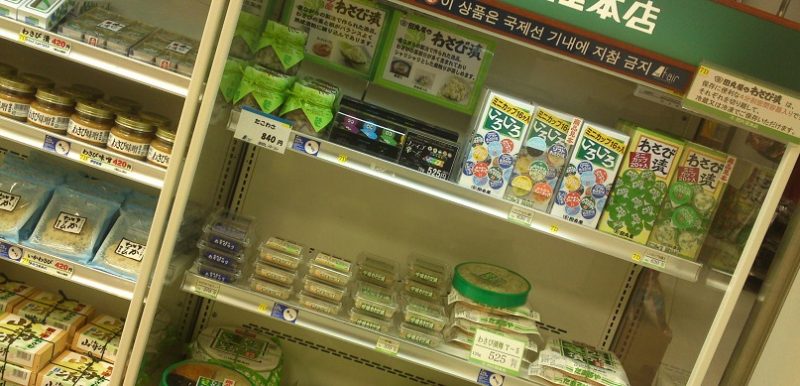Wasabi (山葵) is a famous seasoning used in Japanese cuisine in the form of a paste. Made from a Japanese horseradish called wasabi from the Brassicaceae family.
Wasabi is expensive because it is grown in cold water and in mountainous regions, mainly in the Amagi Plateaus, Izu Peninsula, Shizuoka, Hotaka and Nagano.
The wild Japanese wasabi seems to have been used as a medicinal plant and antidote for food poisoning, and was thus served with raw fish since the Nara Period between 710 and 793. Its first historical record was in the botanical dictionary, compiled in the Heian Period between 794-1185.

Wasabi in cooking
Wasabi is used in cooking in a variety of ways. First, the root can be consumed either in paste or powder or fresh along with its leaves. It has a slightly spicy flavor and gives a completely different sensation in the mouth.
In addition to the traditional use with sushi e sashimi, wasabi can be used in recipes like arroz ochazuke and some types of macarrão. They often use wasabi powder to season other recipes, such as fried and roasted vegetables.

In Japan, some restaurants allow customers to grate their own wasabi root to eat it as fresh as possible. Japan is famous for inventing flavors in its products, so it's common to find ice cream, drinks, chocolates, snacks, popcorn, peas and peanuts flavored with wasabi.
Unfortunately, the famous green paste that we eat in sushi restaurants is not pure wasabi, but a mixture of wasabi with dye, mustard and other ingredients.
To finish and complement the article, let's leave a very fun video of our friends from Japan each day visiting the largest wasabi farm in Japan.
